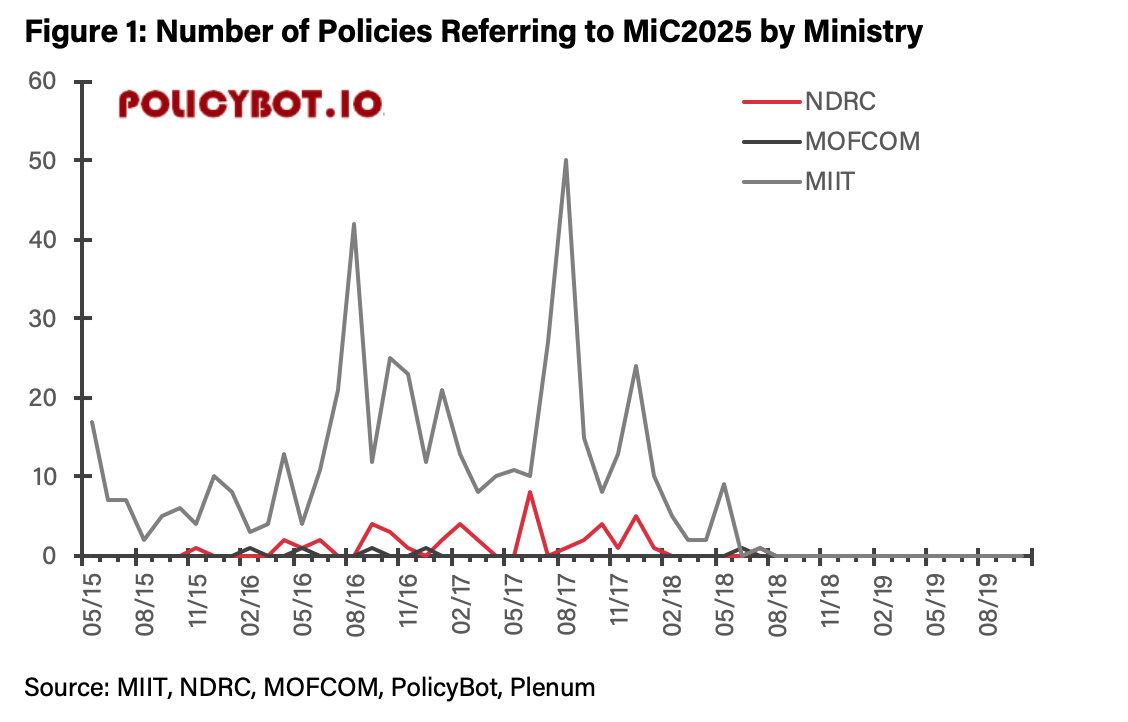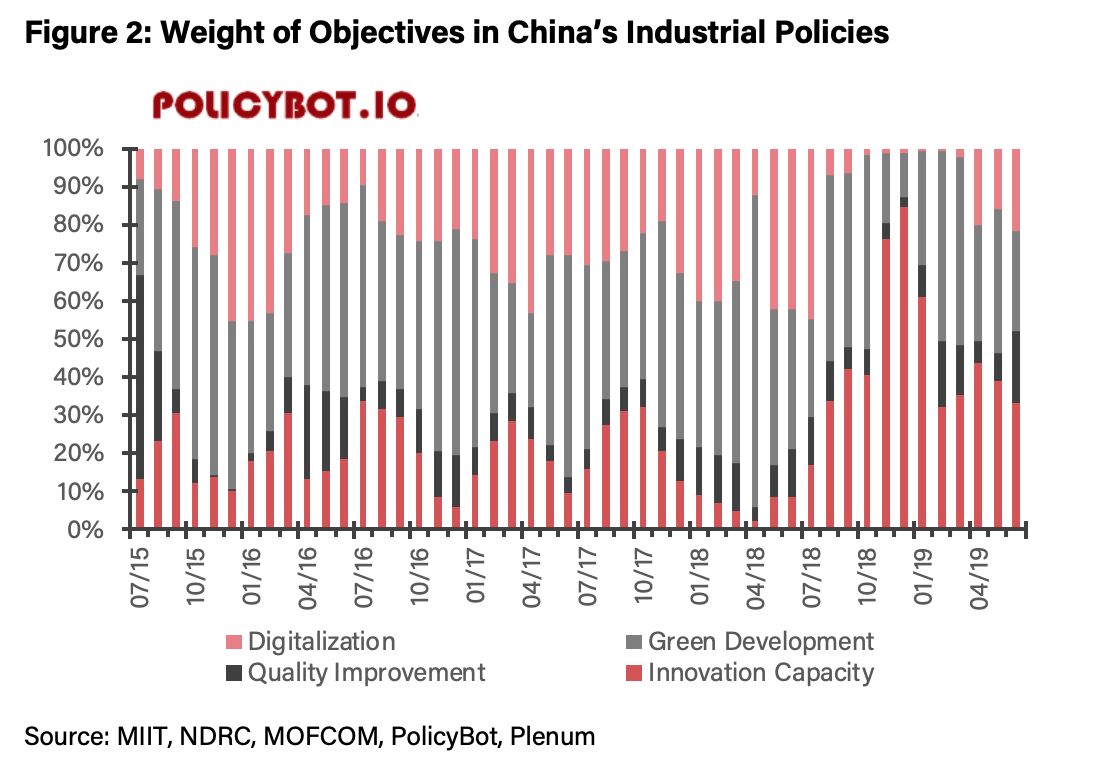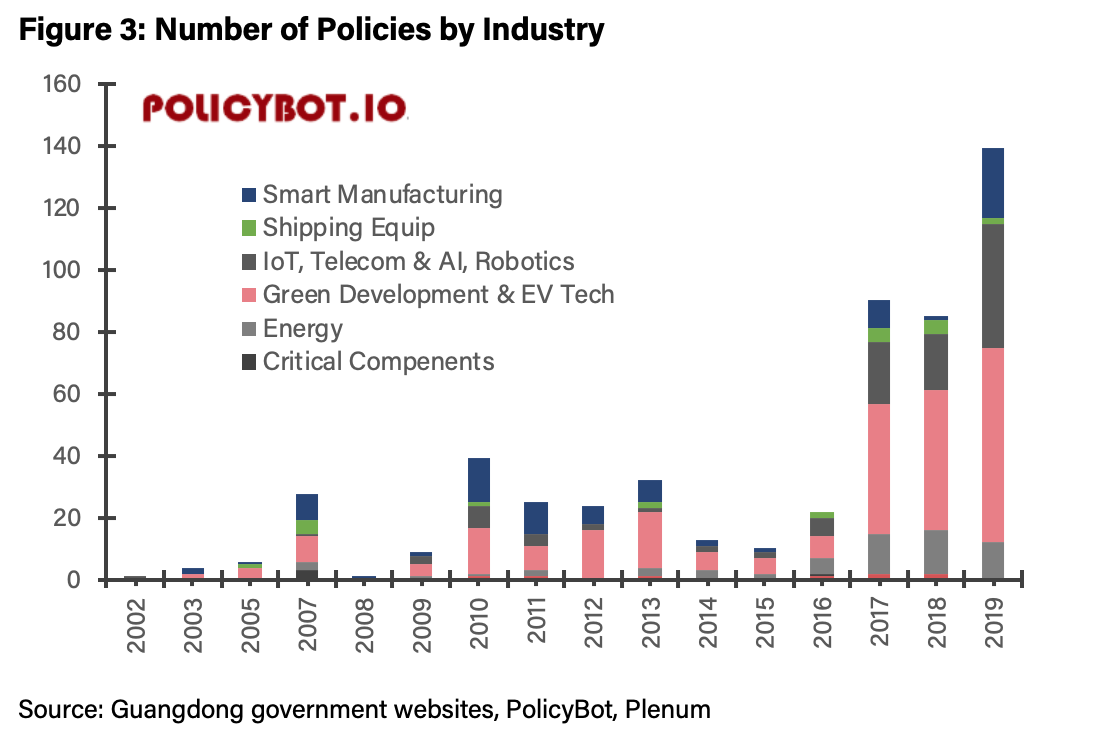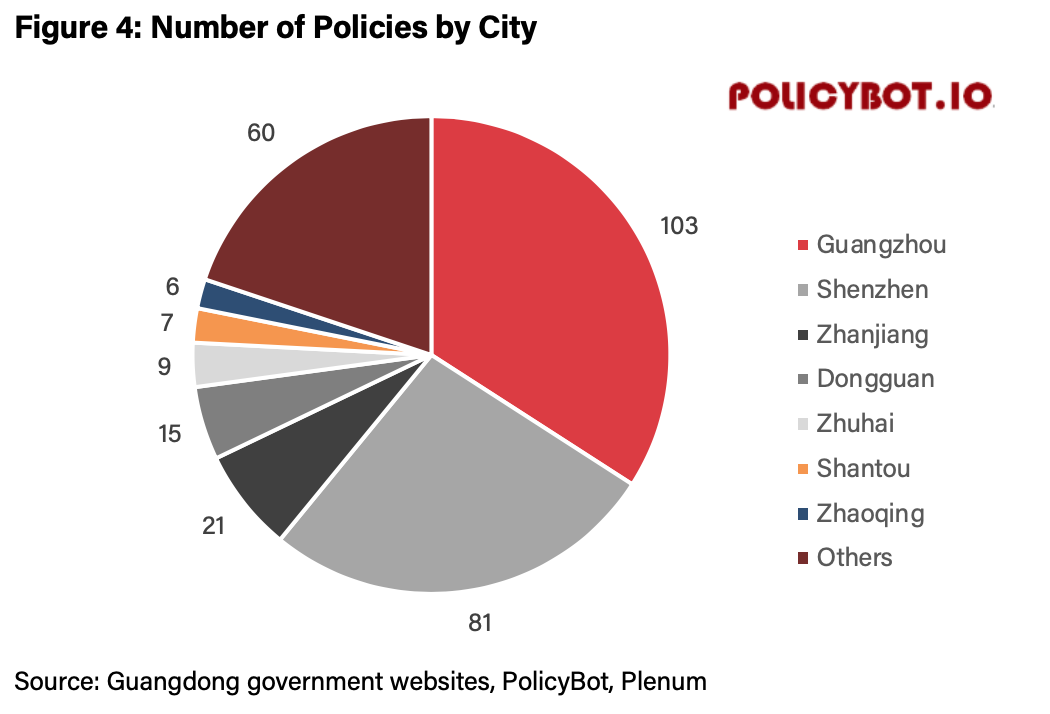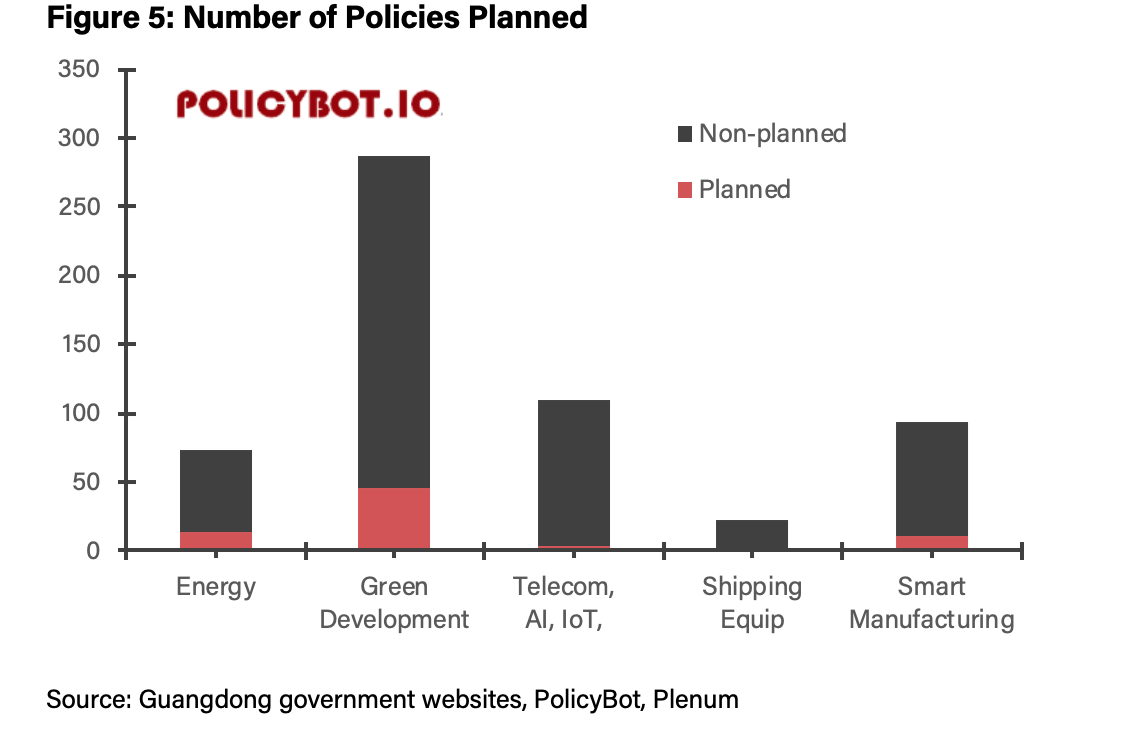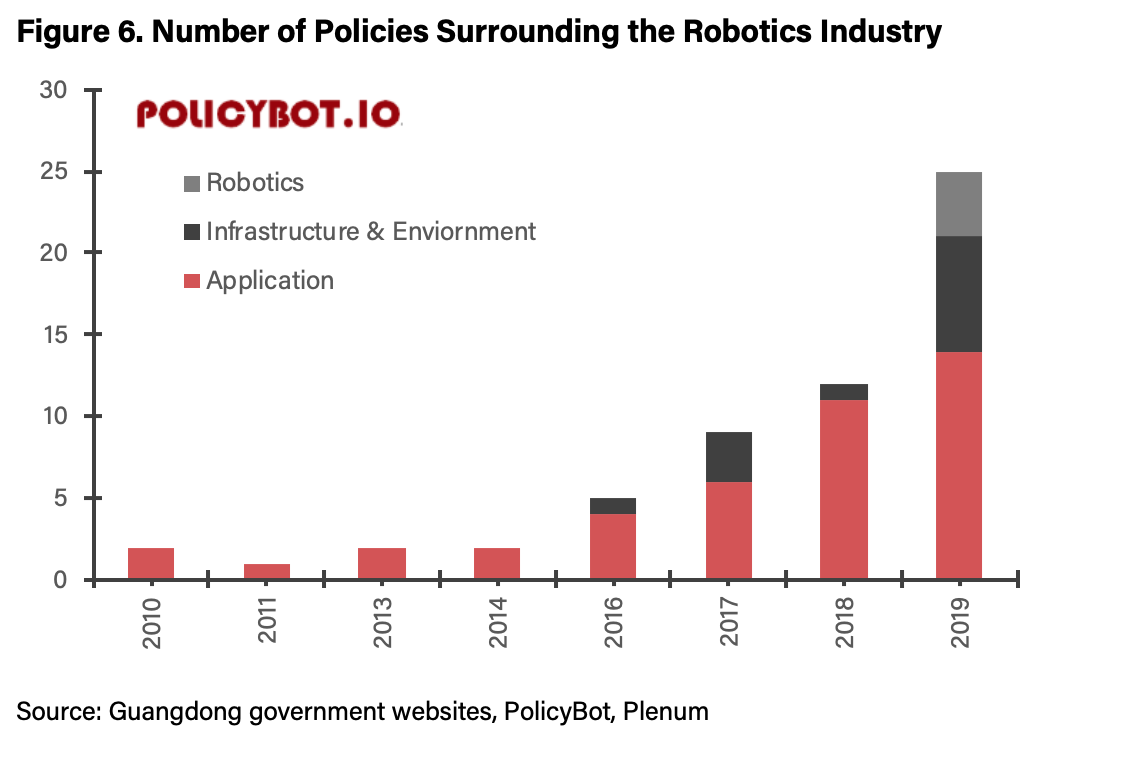Are China’s industrial policies changing? If so, how? Some high-level facts are well known, like China’s ambitions described in the famous Made in China 2025 (MiC2025) plan. But analysts need more granular information to understand whether China’s industrial policies are changing in practice and how that may affect businesses on the ground. Unfortunately, existing resources have not been able to address these questions in a systematic way.
In partnership with Policybot, a policy data provider and market-investment intelligence technology firm, we are developing a data-driven approach to track China’s industrial policies and help investors and corporate managers make better sense of them.
To understand the changes of policies, one must look at historical data to detect policy patterns and contextualize them in China’s political and economic environment. To assess the impact of policies on businesses, one needs to look at a specific location or sector where policies could be very different from the macro picture. In short, high-quality evidence and analysis should be the foundation of good decision making.
In the sections below, we are excited to present you our initial works.
At the national level, we discovered a shift of policy focus from green development to innovation capacity in the past year. But at provincial level, we found that Guangdong still pays more attention to green development than innovation, leaving significant room for firms to explore their own approach of technology advancement. For a specific industry, robotics, we found that policies in Guangdong have been creating demand and building infrastructure to facilitate development of the industry rather than directly promoting the industry itself.
These findings reveal interesting nuances buried in high-level analysis of China’s industrial policies which are actually critical for businesses to make the right decisions at the right time. Transparency of provincial governments is improving, and we offer solutions to capture the trend. We are also developing new capacity to track more ministries and news, identifying new dimensions of policy influences such as subsides and regulations, and correlating policy announcements with market dynamics.
We started by exploring industrial policies at national level with a focus on the MiC2025 plan. We trained the machine to collect all policies published on the websites of relevant authorities, including the National Development and Reform Commission (NDRC), the Ministry of Industry and Information Technology (MIIT), and the Ministry of Commerce (MOFCOM). The machine found 475 policies framed as part of the MiC2025 plan.
Our search confirmed that policies stopped referring to MiC2025 in July 2018 (Figure 1), around the same time when domestic media stopped doing so. Mentioning of the MiC2025 plan was at its peak level in the second half of 2016, suggesting that it took authorities about a year to translate the grand plan into implementing policies. MIIT was expectedly the most important actor in issuing relevant policies, and NDRC also caught up in early 2017. In contrary, MOFCOM, which oversees China’s trade and investment with foreign entities, was mostly silent throughout the period, suggesting that MiC2025 was mainly targeting domestic audience.


